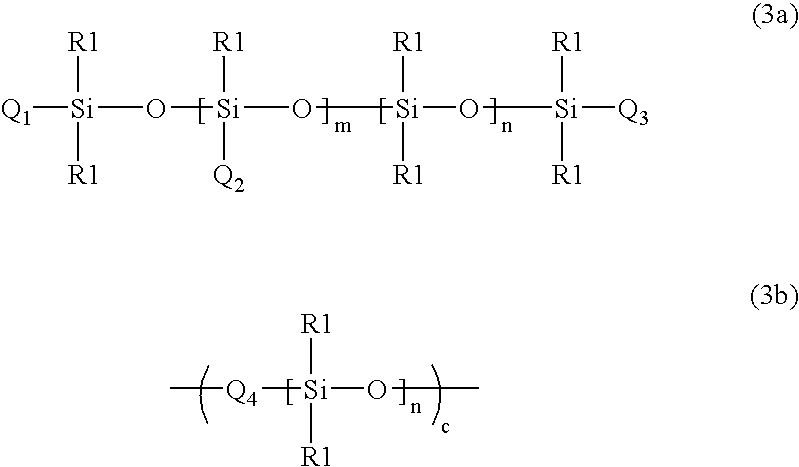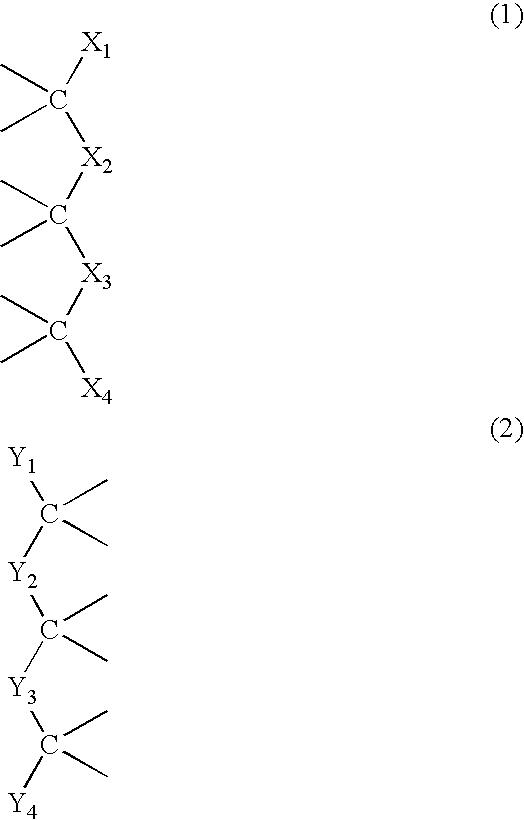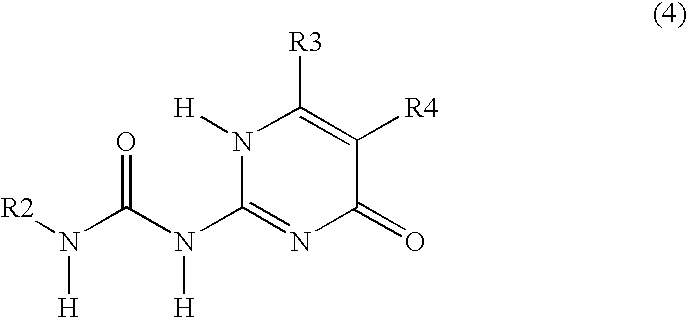Siloxane polymers with quadruple hydrogen bonding units
- Summary
- Abstract
- Description
- Claims
- Application Information
AI Technical Summary
Benefits of technology
Problems solved by technology
Method used
Image
Examples
Embodiment Construction
[0052] The invention will now be clarified with examples, without however being limited thereby.
[0053] The following examples describe: [0054] (i) the synthesis of building blocks; reactive synthons that contain the 4H-unit or that give the 4H-unit after reaction with functional polysiloxanes, [0055] (ii) coupling of reactive synthon building blocks to functional polysiloxanes; a variety of coupling strategies is presented, [0056] (iii) the bulk properties of modified polysiloxanes by discussing the Theological properties of one polysiloxane, [0057] (iv) gelling experiments.
(i) The Synthesis of Building Blocks
Synthesis building block 1
Allylisocyanate (3.12 mL) was added to methyl-isocytosine (or 2-amino4-hydroxy-6-methyl-pyrimidine, 4.0 g) suspended in methylethylketon (80 mL) and pyridine (5 mL), and subsequently stirred for 20 h at 80° C. under an argon atmosphere. After cooling to room temperature, the product was filtered, washed with pentane and dried in vacuum. A white...
PUM
| Property | Measurement | Unit |
|---|---|---|
| Percent by mass | aaaaa | aaaaa |
| Mass | aaaaa | aaaaa |
| Percent by mass | aaaaa | aaaaa |
Abstract
Description
Claims
Application Information
 Login to View More
Login to View More - R&D
- Intellectual Property
- Life Sciences
- Materials
- Tech Scout
- Unparalleled Data Quality
- Higher Quality Content
- 60% Fewer Hallucinations
Browse by: Latest US Patents, China's latest patents, Technical Efficacy Thesaurus, Application Domain, Technology Topic, Popular Technical Reports.
© 2025 PatSnap. All rights reserved.Legal|Privacy policy|Modern Slavery Act Transparency Statement|Sitemap|About US| Contact US: help@patsnap.com



